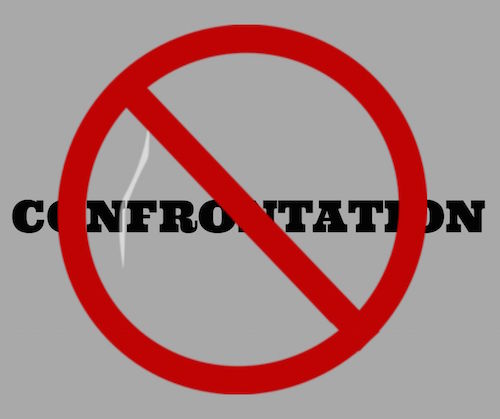You have an account that’s past due. But why?
Why is the key question to answer before you make a move. Only with the answer can you come up with a solution to get the account back on track.
 The answer can come from any number of channels. The sales team may alert you to circumstances on the floor, like a diminishing inventory or the loss of a major client. There may even be a natural disaster that impacts your customer, like flood or fire. Typically, the simplest way to get to the bottom of things is to ask.
The answer can come from any number of channels. The sales team may alert you to circumstances on the floor, like a diminishing inventory or the loss of a major client. There may even be a natural disaster that impacts your customer, like flood or fire. Typically, the simplest way to get to the bottom of things is to ask.
If you have multiple past dues, before you begin the process of asking about late pays, you may find it useful to divide the customers into two categories:
Those who generally keep their commitments
VS
Those who frequently break promises to pay
When dealing with the first category, the customer for whom paying late is not the norm, getting to the truth of why payments have slipped will probably be easy. This customer is more likely to tell you straight up what’s going on, unless it’s something deeply personal.
The second category of customer, the one who routinely pays late and frequently breaks promises will probably not give up the truth easily. For this customer, paying late is probably how he/she does business as a general rule. Good luck figuring out why.
No matter which type of customer you’re dealing with, it’s important to hop right on the issue. Waiting to make contact for 30, 45 or 60 days past the due date just sets you up for running the catch-up treadmill. Don’t put it off … analyze the file, strategize and begin asking questions.
Creating a collection strategy will help you streamline your efforts and collect the money. Getting to the truth of the matter gives you the information you need to take the next step toward payment.
Set Your Priorities
Size of company and level of debt will require different approaches to collection. Type of industry, may require special consideration particularly for seasonal businesses or areas of the country afflicted with drought or flooding or some other wide spread disturbance. This is the type of information that will help you prioritize your collection cases.
As an example, you may give the customer who has experienced damage from a storm extra time to pay … an exception you wouldn’t make for the customer who simply chose to pay someone else ahead of you. For this reason, we can’t emphasize enough the necessity of knowing each customer and the details of each case.
Create A Plan (Strategy)
When we talk of strategies, we’re simply suggesting a step-by-step process or plan, which includes counter-actions in response to the customer’s behavior in the course of collection. In other words, your customer may respond to your actions in any number of ways: Your strategy needs to include your counter-move/s.
In a perfect world, your first step toward receiving payment would result in payment in full. In which case, you simply make note of the details of your interaction for the file and move on to your next case. But in a not-so-perfect world, your first step may result in a promise to pay. In which case, you have more strategy to implement: a timely follow-up.
In a really-totally-messed-up world, your customer may flat out refuse to pay. In that case, you must employ a more stringent strategy that will include getting to the core of the customer’s complaint. If it’s legit, you take a route to make things right, which may often be unique to that particular situation. If the complaint is not legit, your strategy may become more complicated, requiring compromise, mediation or litigation.
The point is, having a general plan in place will help you expedite the matter even in the event of a curve ball. Yes, each case is different and may require a plan change, but with a basic strategy already in place, you’re ahead of the game.
Get the Collection Ball Rolling
Having a plan already in place will make collecting a tad easier. (We said ‘easier’, not easy.)
You’ve read this far so you already see how critical it is to understand your customer, the industry and specific circumstances in order to collect. No two customer’s are alike, even those in the same industry. Before you make your initial contact, analyze:
Size of company
Geographic location
Seasonal ebbs and flows
Size and age of debt
Industry trends
20Payment habits
Analyze Your Results
Each case deserves your full attention whether it was resolved without blood, sweat and tears or not. Document the events as they unfolded. This is information that will help you make wise choices in the future.

 Your team means everything to your bottom line. Therefore, keeping them motivated, challenged, and positive should be a priority.
Your team means everything to your bottom line. Therefore, keeping them motivated, challenged, and positive should be a priority. Update the Customer File
Update the Customer File The answer can come from any number of channels. The sales team may alert you to circumstances on the floor, like a diminishing inventory or the loss of a major client. There may even be a natural disaster that impacts your customer, like flood or fire. Typically, the simplest way to get to the bottom of things is to ask.
The answer can come from any number of channels. The sales team may alert you to circumstances on the floor, like a diminishing inventory or the loss of a major client. There may even be a natural disaster that impacts your customer, like flood or fire. Typically, the simplest way to get to the bottom of things is to ask.


 Final demand letters must cut to the chase to be effective. To get results, consider these 8 essentials for letters that pack a punch and get results:
Final demand letters must cut to the chase to be effective. To get results, consider these 8 essentials for letters that pack a punch and get results: DURING DISCUSSIONS
DURING DISCUSSIONS